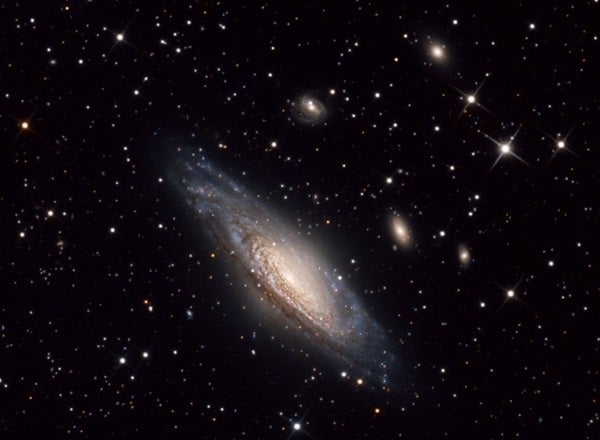Deep-sky objects have some creative nicknames, but what’s up with the Deer Lick Group? In the 1980s, amateur astronomer Tom Lorenzin was observing in the mountains of North Carolina, at the Deerlick Gap Overlook. Because his view of NGC 7331 and its surrounding galaxies was so memorable, he christened them the Deer Lick Group.
William Herschel discovered NGC 7331 in 1784. This galaxy is a pure spiral, nary a bar in sight. It lies in the constellation Pegasus the Winged Horse about 4.4° north of 3rd-magnitude Matar (Eta [η] Pegasi).
The Deer Lick Group contains four other galaxies: NGC 7335 (magnitude 13.4), NGC 7336 (15), NGC 7337 (15.2), and NGC 7340 (14.9). In comparison, NGC 7331 glows at magnitude 9.5. But these fleas, as they are called, aren’t actually fainter or smaller than the main galaxy. They’re simply much farther away.
While NGC 7331 lies about 40 million light-years from Earth, the four other members are between 290 million and 370 million light-years away. So, calling this gathering a group is correct only in an apparent sense. In fact, none of the fleas are even gravitationally bound to each other.
From a dark observing site, most observers can spot NGC 7331 through 50mm or larger binoculars. An 11-inch telescope and a magnification of 200x will reveal a bright core surrounded by a soft glow three times as long as it is wide. You’ll also just barely see three of the fleas as an equilateral triangle east of the main galaxy.
Make sure to explore Astronomy’s full list of 101 cosmic objects you must see. New entries will be added each week throughout 2022.










